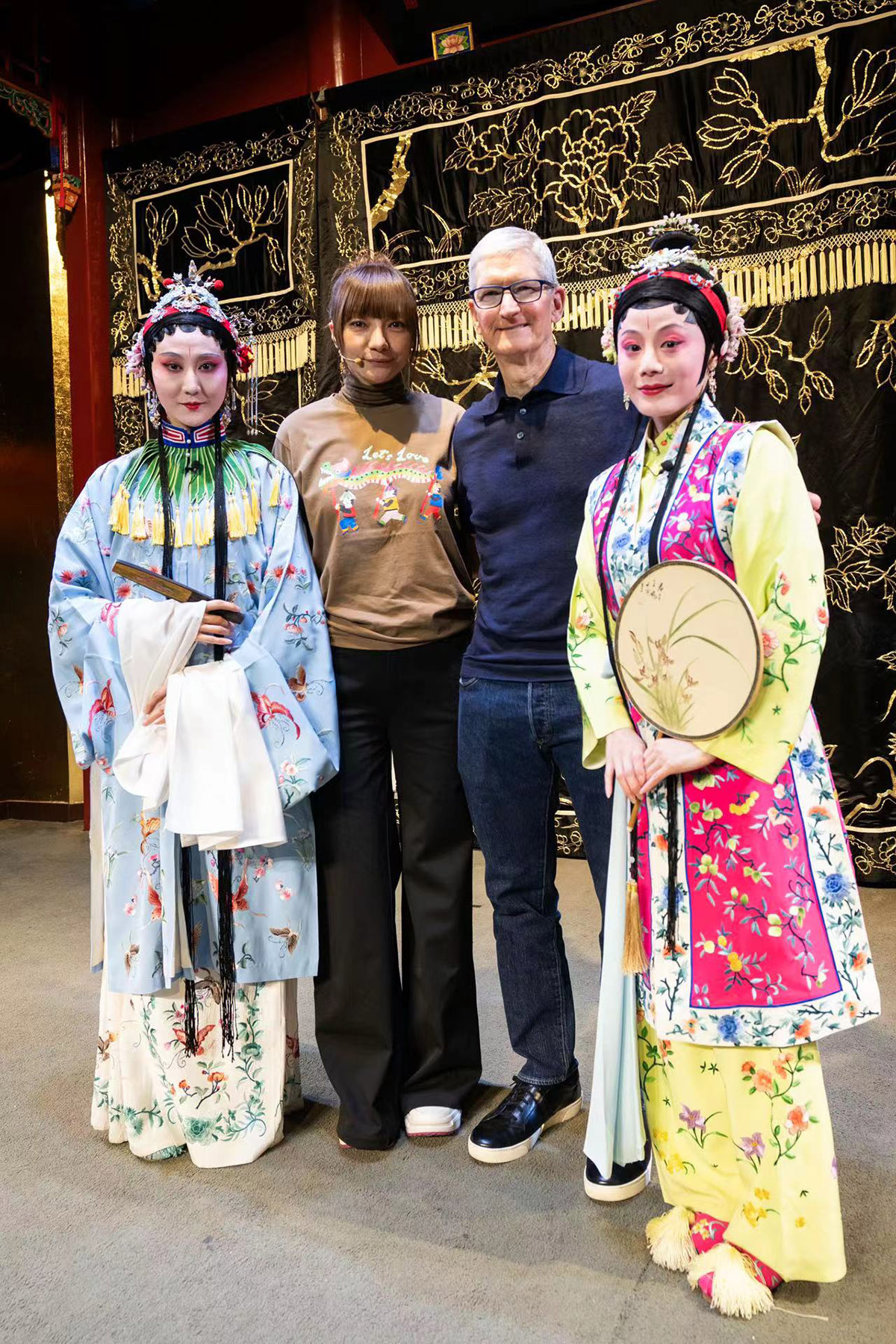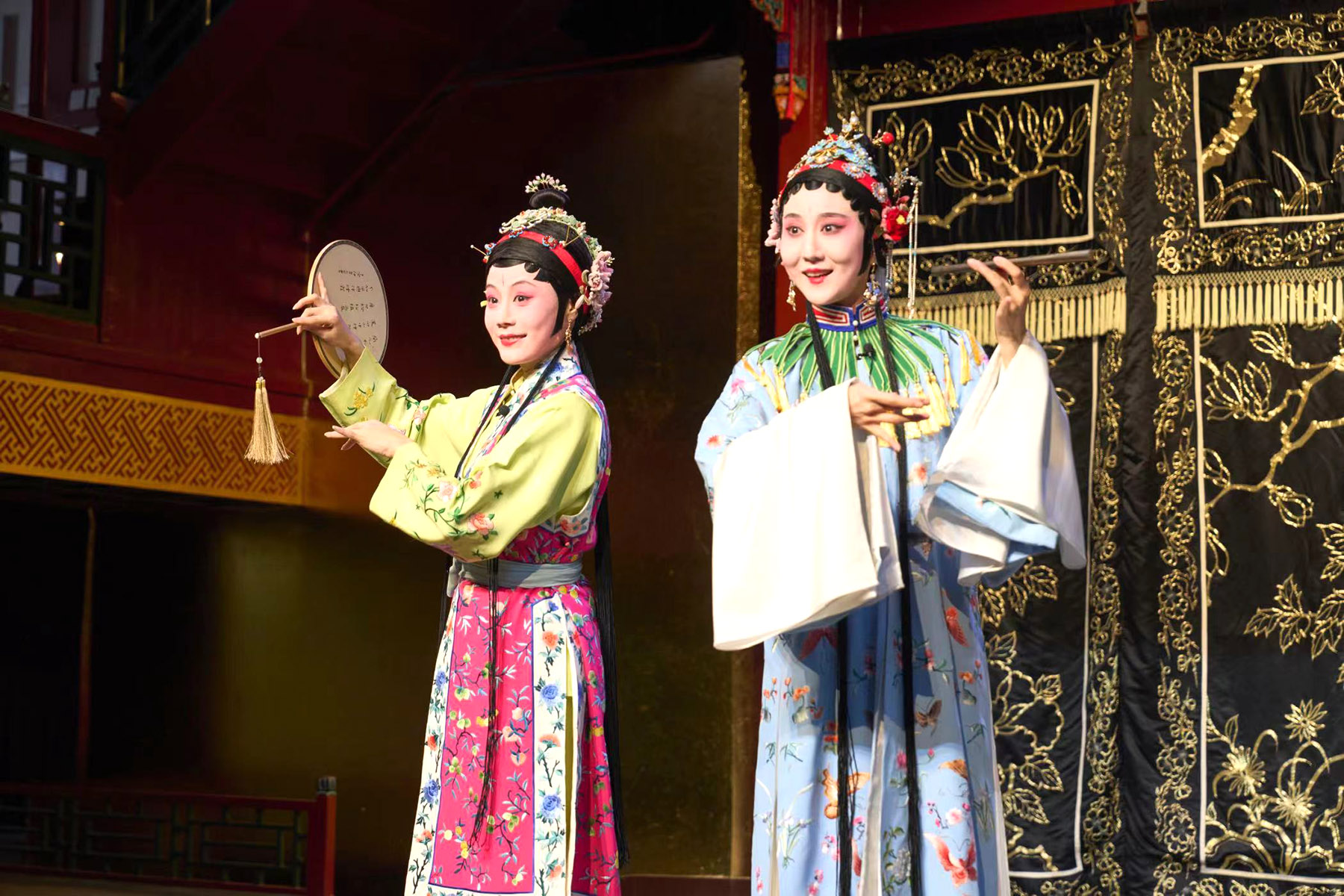
Beauty and timelessness, these are what model-actress and director Chang Chunxiao wants to convey through her ongoing Kunqu Opera-themed short documentary project.
The People in the Time Tunnel documents fashion photographer Feng Hai's role as artistic styling consultant on Romantic Dream in Garden, a new interpretation of the Ming Dynasty (1368-1644) Kunqu Opera masterpiece, The Peony Pavilion, produced by the Northern Kunqu Opera Theatre in Beijing.
Chang's documentary captures the way Feng refers to image archives of the Ming Dynasty and reconstructs the appearance of the characters — designing makeup details and the way performers wear their ornaments, for example — how he shot the posters for the adaptation, and his understanding of the traditional Chinese opera form in general.
READ MORE: Peking Opera diva is pitch perfect for role
On Monday, Chang screened a trailer of her documentary shot on iPhones. She also discussed behind-the-scenes stories with Apple CEO Tim Cook. The event took place at Beijing's more than 300-year-old Zhengyici Kunqu Theatrical House, where Romantic Dream in Garden made its debut in December.
Written by playwright Tang Xianzu around 400 years ago, The Peony Pavilion is a love story that extends beyond life and death, as well as the heroine Du Liniang's search for love and freedom in feudal society. The Beijing theater's adaptation was also preformed at the National Centre for the Performing Arts in February.
Upon learning about the traditional opera form and watching a classic excerpt from The Peony Pavilion performed by actresses from the Northern Kunqu Opera Theatre, Cook said in an interview with China Daily that technology helps expand the audience for traditional culture.
"Our history and culture is very important to understanding the present moment and where we're heading in the future," he says.
"Only a few of us can fit in the theater and enjoy it, but with the video we're able to capture that for the world. It enables us to connect with our history in a much deeper way and with many more people."
Chang learned Kunqu Opera as a child. Growing up around historical Liulichang Cultural Street in Beijing, which has been home to bookstalls and shops selling ink and writing brushes, calligraphy and antiques since the Qing Dynasty (1644-1911), she says her early years were filled with the fragrance of ink and the sound of Kunqu Opera taught to her by the elderly, and this heavily influenced her film.
"One thing I want to explore is how the younger generation of performers at the Northern Kunqu Opera Theatre interpret Du from a contemporary perspective and how they understand the past," Chang says.

As the host of a private collection of centuries-old opera costumes, Feng is particularly drawn to the visual elements of opera and constantly seeks inspiration from them.
For example, he says the color combinations of opera costumes from the early 20th century have gradually formed an alternative aesthetic system in his mind. Speaking of the modern development of traditional opera, Feng calls for faithful preservation of the essence of the art form to maintain its authenticity.
"The principle of passing on should be to minimize loss as much as possible," Feng says.
ALSO READ: Global students explore Suzhou's cultural depth
Chang has been thinking about art and time for many years: "Art weaves in and out of the passage of time, yet it never fears time. A truly classic work will not be rendered obsolete by time.
"The Kunqu Opera performers and Feng, whom I have captured in the documentary, are those who endeavor to bring the beauty of the past into the contemporary era. I hope my short film will be passed on to future generations, allowing them to experience this beauty anew."
Contact the writers at fangaiqing@chinadaily.com.cn


